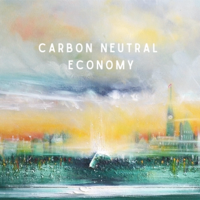In a pilot program conducted from 2015 to 2019, Iceland witnessed the successes of a 4-day workweek. According to the report released in June 2021, project participants “enjoyed greater well-being, improved work-life balance and a better cooperative spirit in the workplace - all while maintaining existing standards of performance and productivity.” Iceland isn’t the first place to trial run shorter workweeks. Japan, New Zealand and even a Nova Scotia municipality have seen similar positive results. During the pandemic, traditional in-office workplaces have faced drastic changes worldwide. One co-benefit of COVID-19 has been the ability to work from home for those who had this option. As society rebounds and attempts to return to business-as-usual, there’s a unique opportunity to establish new hybrid workplace models while at the same time reducing the carbon footprint of businesses. There would also be significant reductions if only 30% of the workforce had this option, in terms of lowered congestion and associated stress and other co-benefits. But, there isn’t a clear-cut answer as in-office, at-home and hybrid models have both benefits, drawbacks and unanswered questions. Therefore, a suggested first step would be to develop and test hybrid models, perhaps beginning with a 2-3 split to evaluate employee well-being and associated ecological benefits. Businesses can share their data to make evidence-based decisions and engage in climate action through reexamining traditional workplace models.

Photo by xijian from Getty Images/Canva
- Log in to post comments



CRC Comments